The Box and Goodies -
The box that the ReadyNAS Pro 6 arrived in was very plain, but this is ok. After all it is not meant as a consumer product. There is no need for a flashy box here as the people ordering it are not going to the local computer store to pick one up. Instead they are ordering one online and know exactly what they are getting. To most IT people the box is of limited use after you get the device in hand. At the most you will put it in a closet in case you need to send it back for replacement or repair.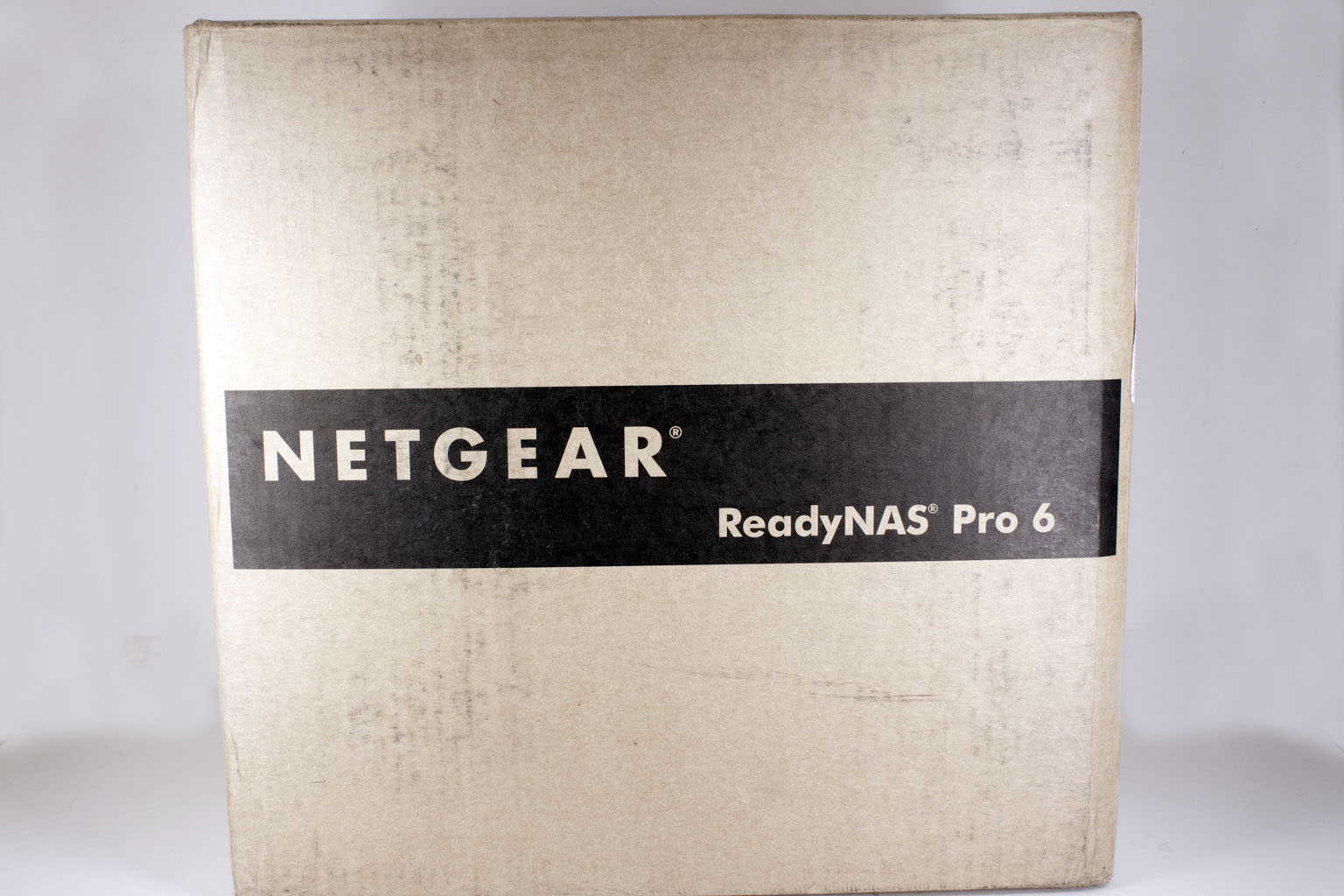
Inside the box was almost everything you need to get things going. You get a utilities DVD, a power cord, and a single network cable. We felt that NETGEAR went a little cheap on us with the single network cable; the ReadNAS Pro 6 has two Gbe LAN ports so they really should have included two network cables.
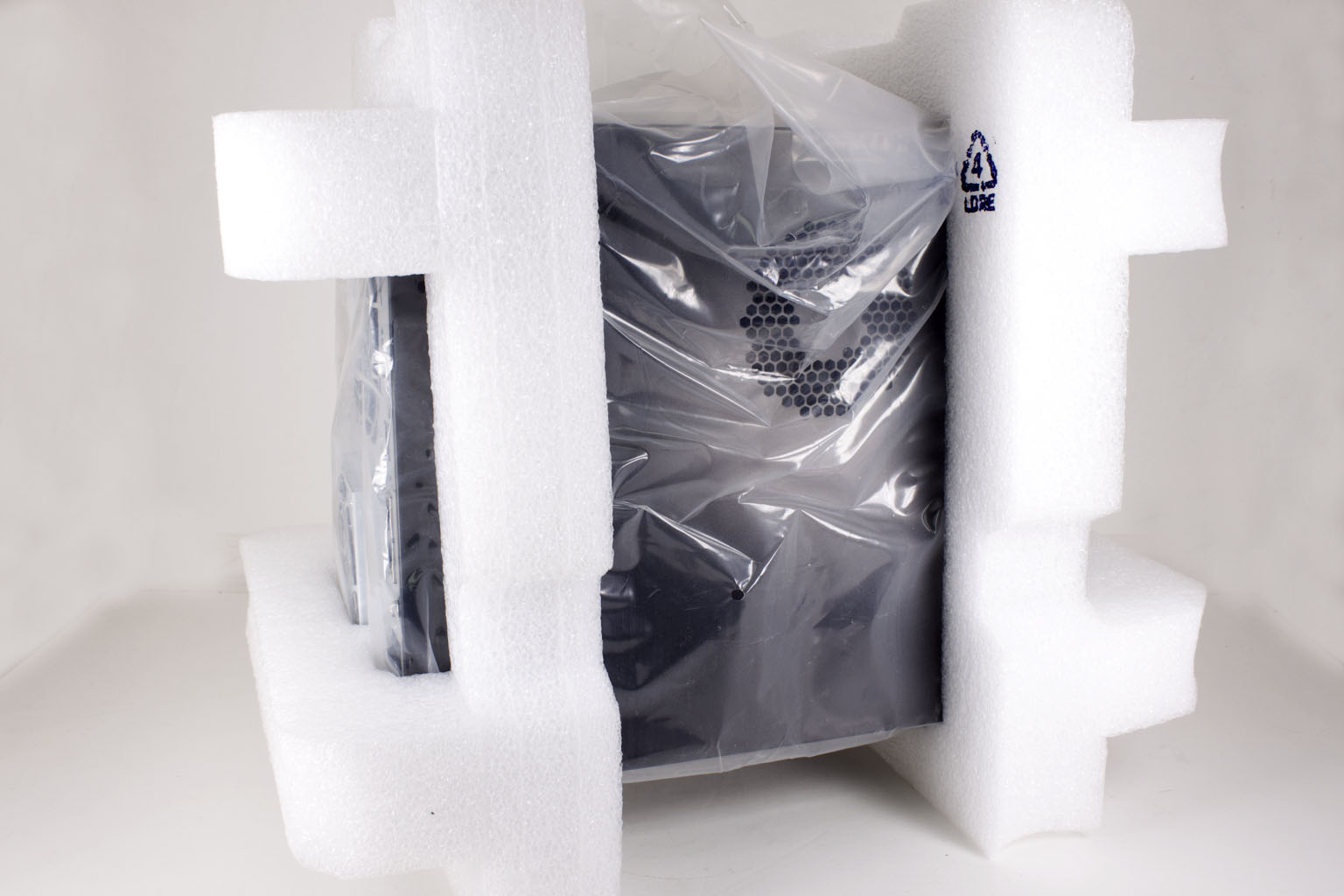 |
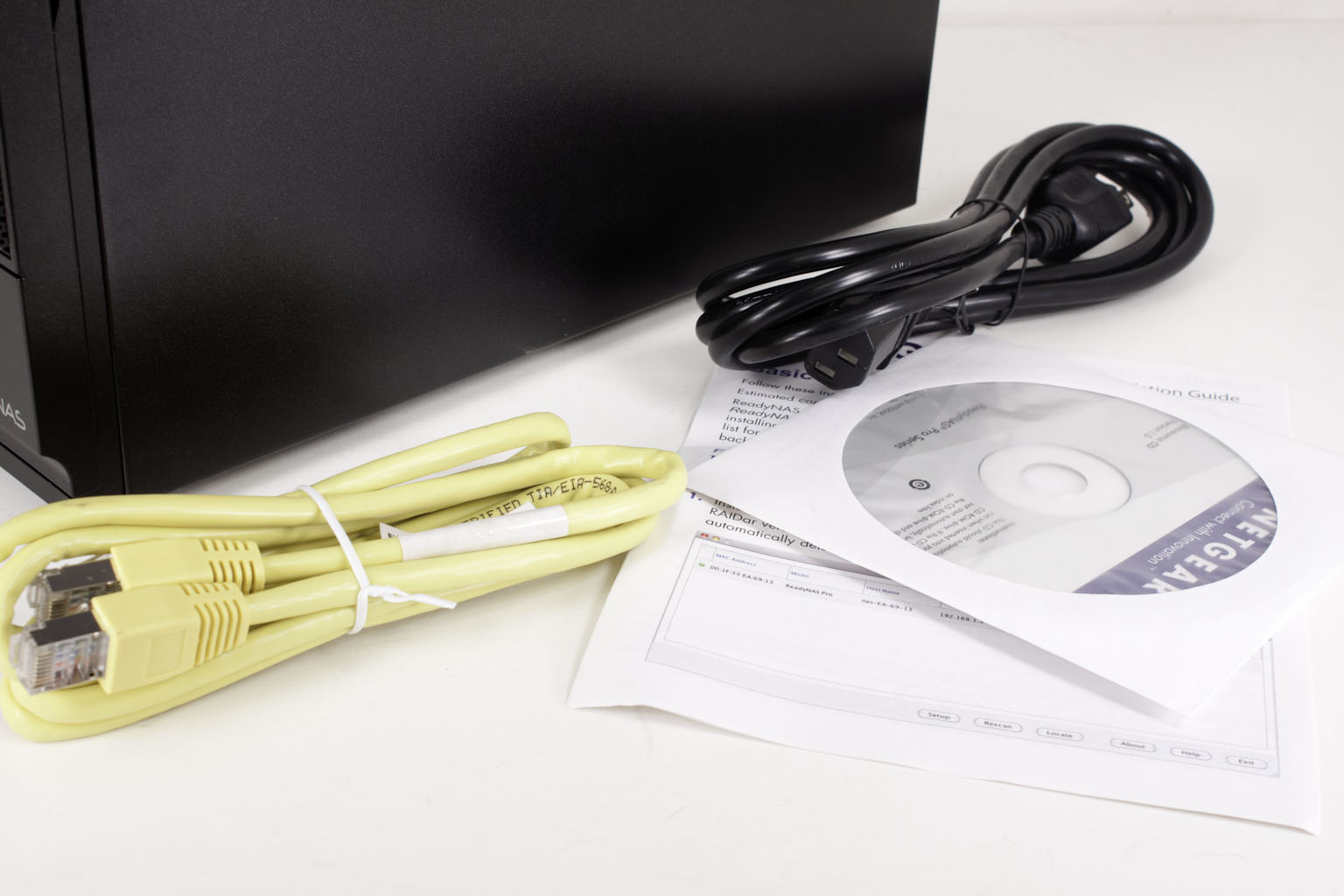 |
Other than the actual ReadyNAS Pro 6 and the items we listed there is not much more to tell.
The ReadyNAS Pro 6 -
NETGEAR is not playing around with the design of the ReadyNAS Pro 6. It is built more like a PC than a NAS and has some very PC like features and components. The front if the box is fairly clean and simple with only a power button, USB 2.0 port, backup button and product labels showing. At the top (behind the clear static protector) is an LED screen that while informative is also very retro and utilitarian.
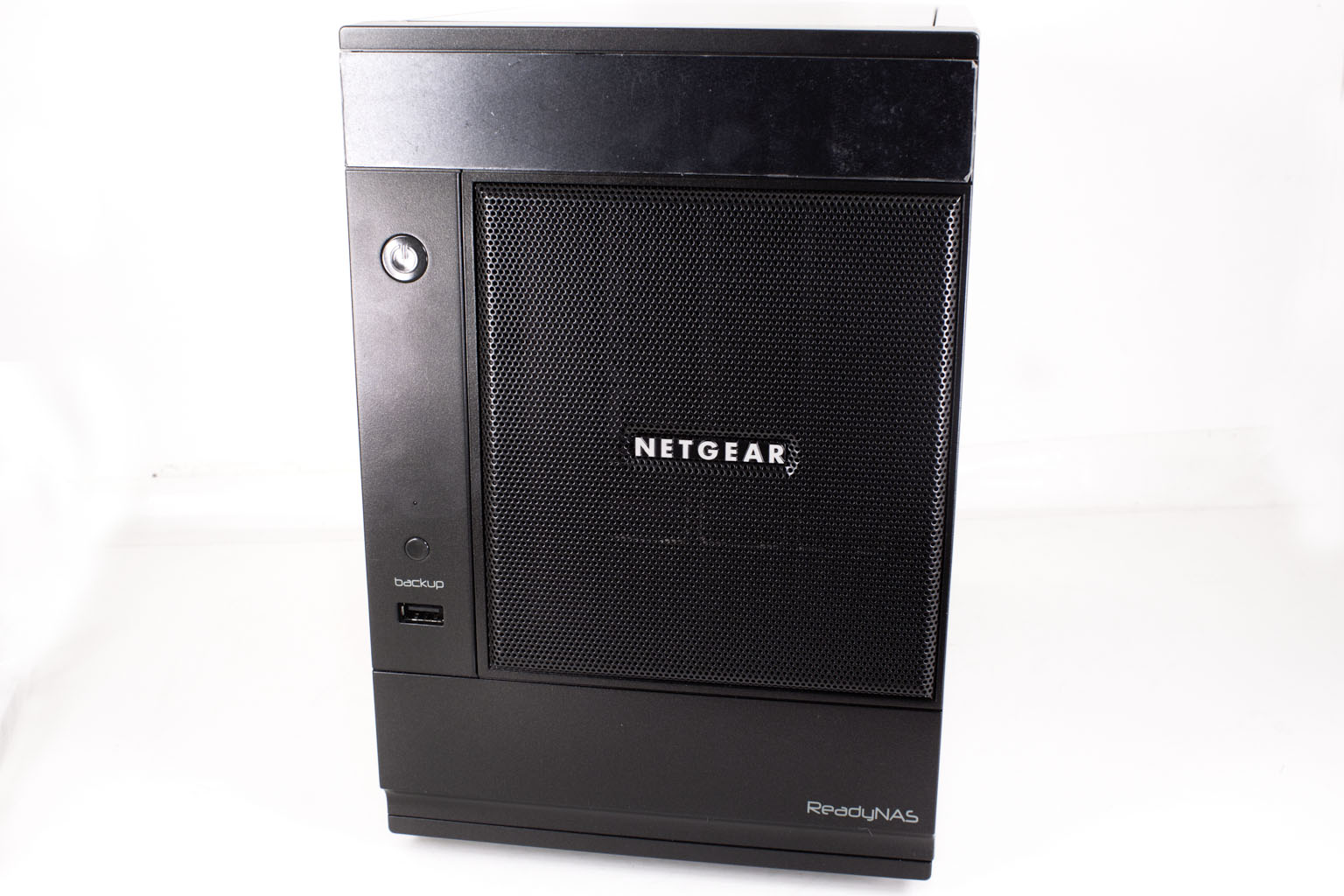 |
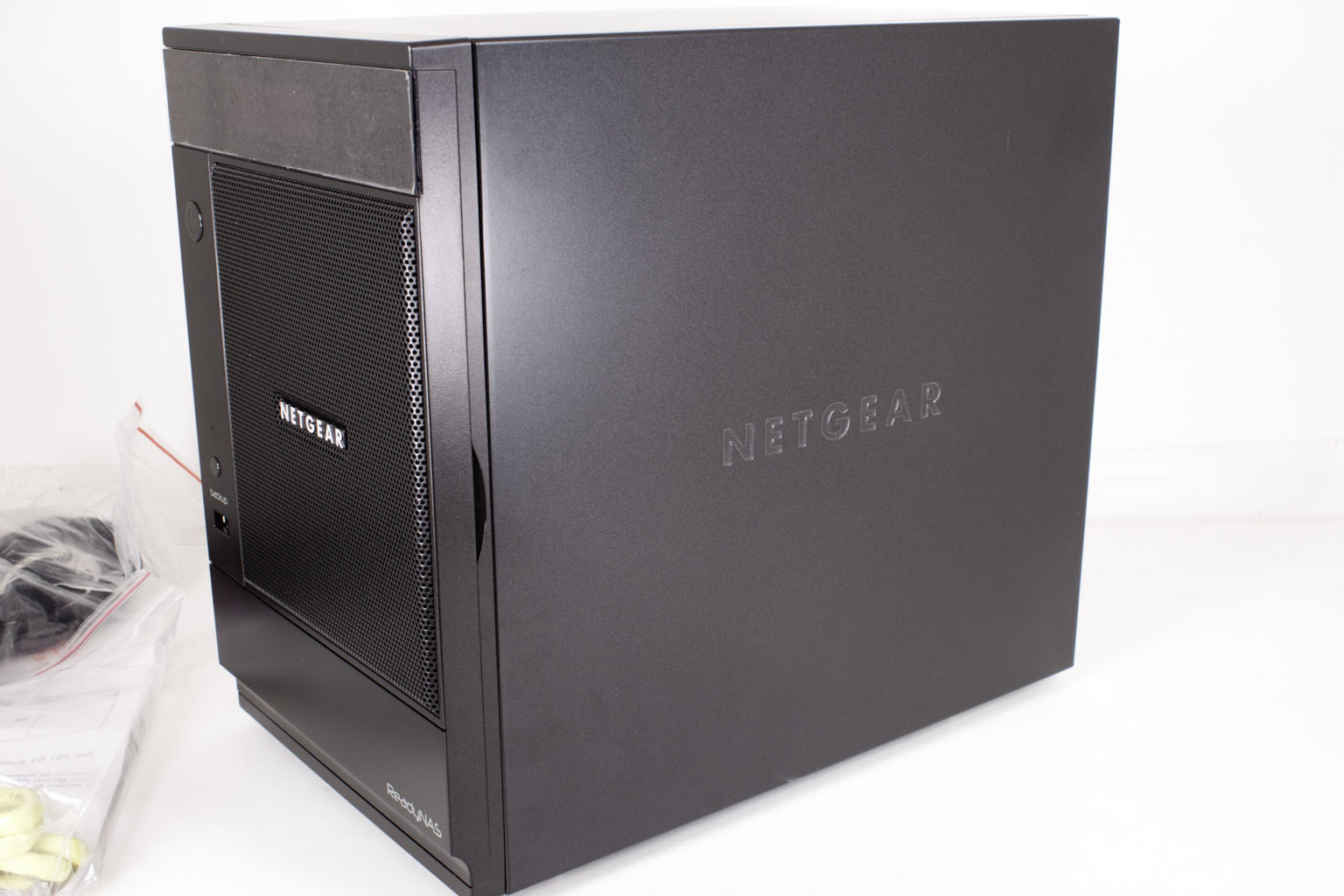 |
Behind the front door there is not much more to see except for the stacked 2 x 3 drive bays. This is an interesting choice in design here and when we first saw it we thought of dual RAID controllers, but at this price range there is no chance of that. Instead this is more for stability and cooling than anything else. It is still a nice design though. Each of the drives pops out very easily by pressing the bottom of the latch. Reinserting them can be tricky as you have metal on metal here so it can bind up. When it does you might have to remove and reinsert the tray.
 |
 |

Moving around to the back we have a very large fan that although low RPM can still move a good deal of air. Below this is a fan for the 300 Watt Seasonic PSU. Also visible in this picture are two USB 2.0 ports and the dual Gbe LAN ports. These ports support failover as well as LACP (802.3ad) to increase throughput. You will need to make sure your router or switch supports this or you will not be able to communicate with it once it is enabled.
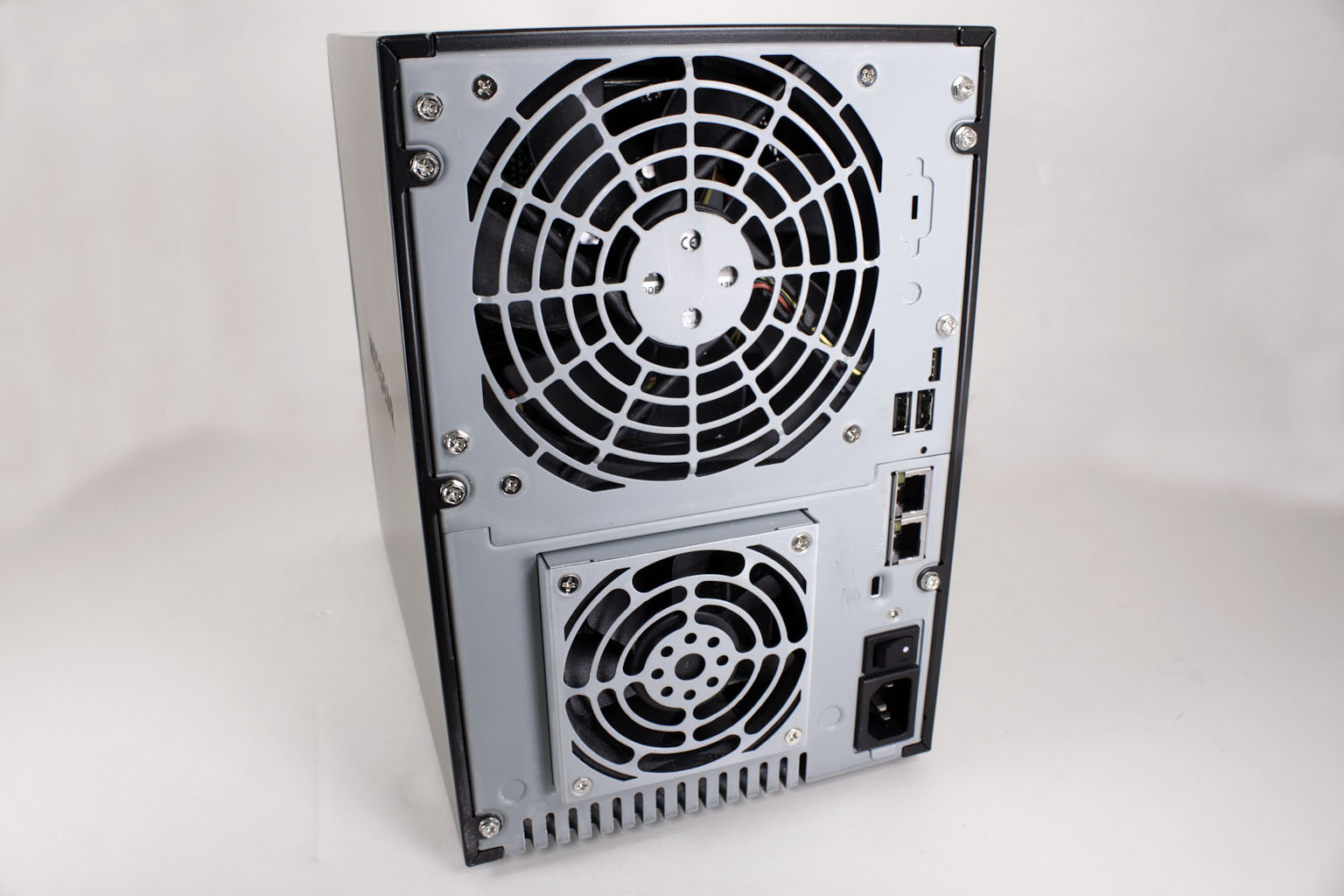 |
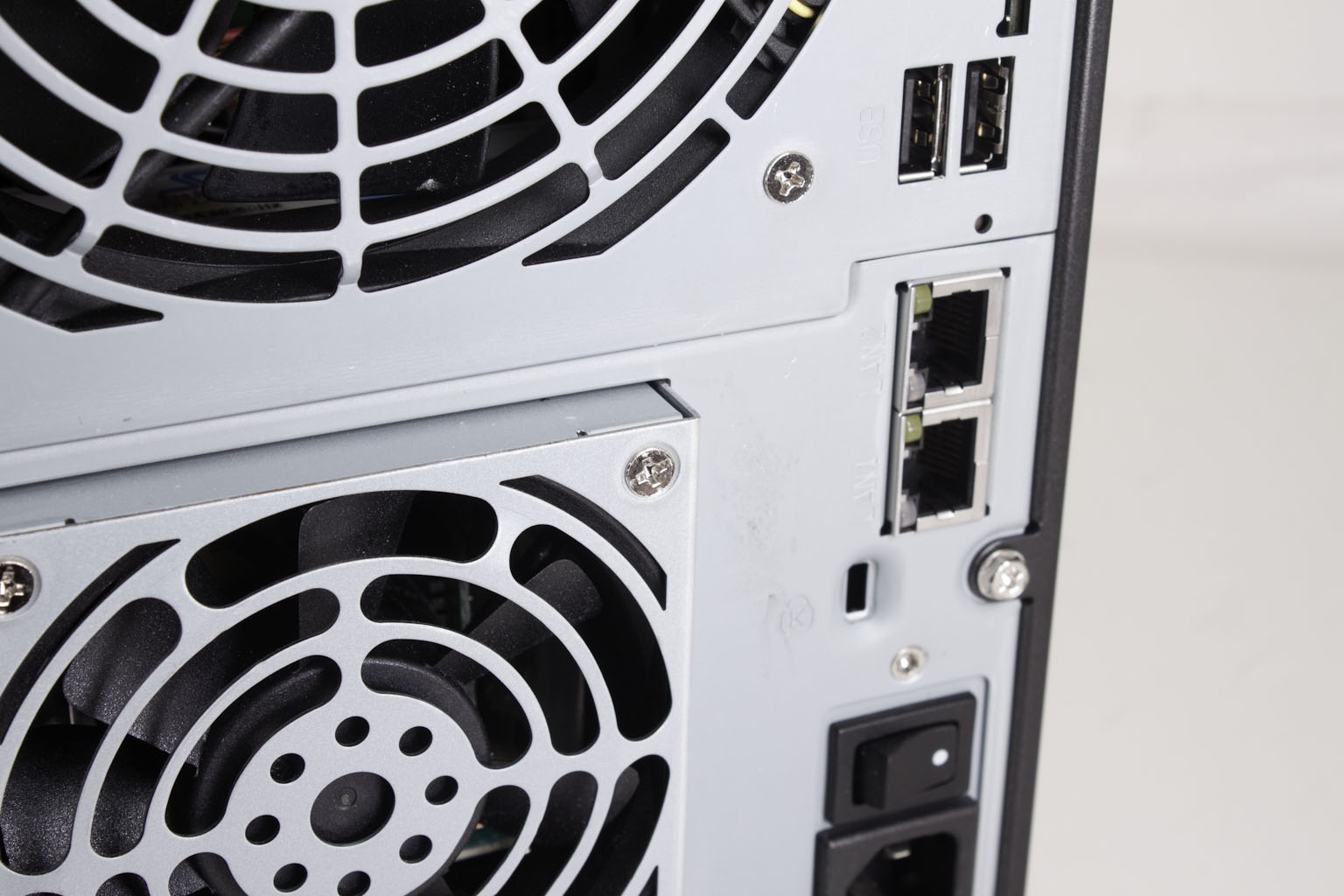 |
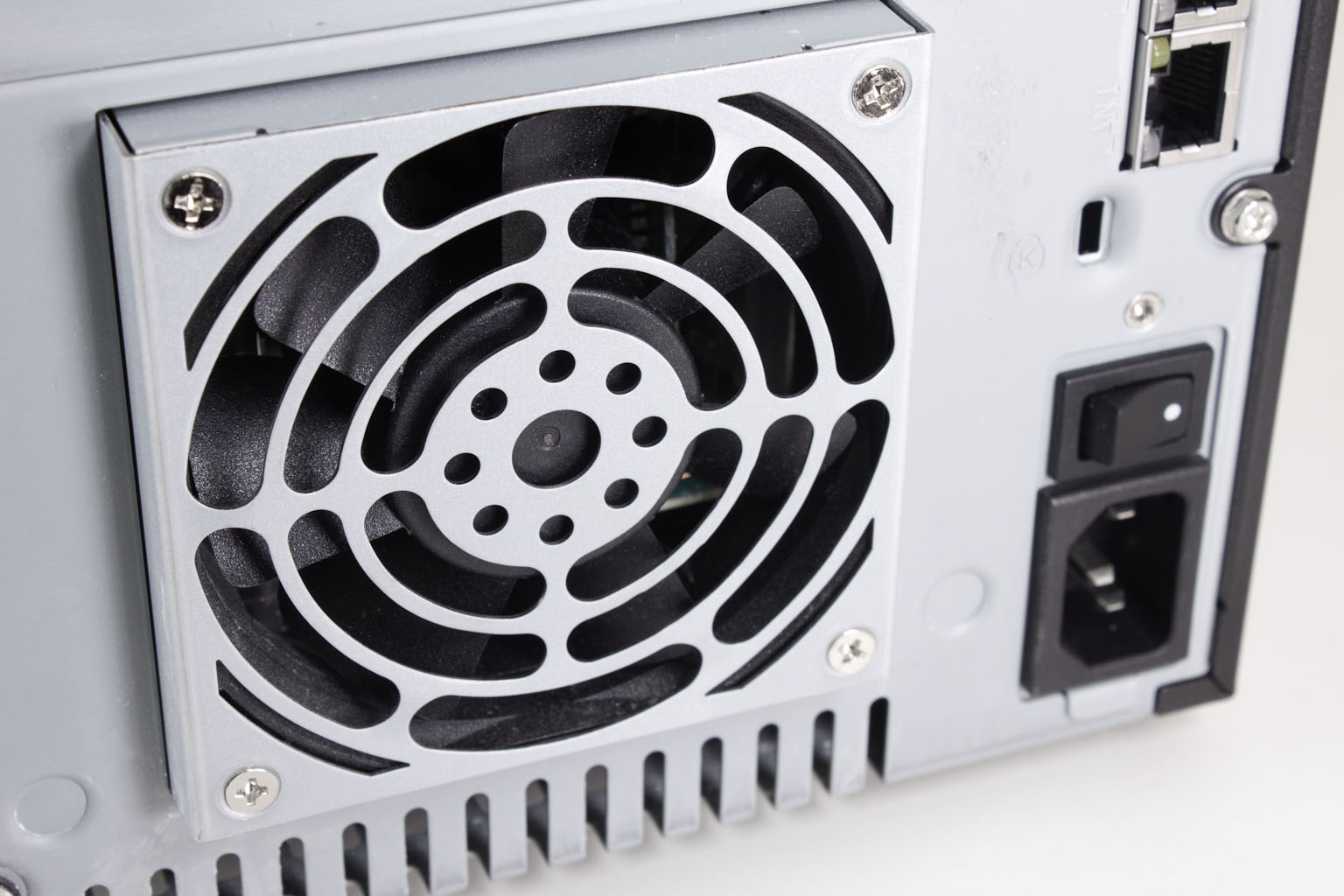 |
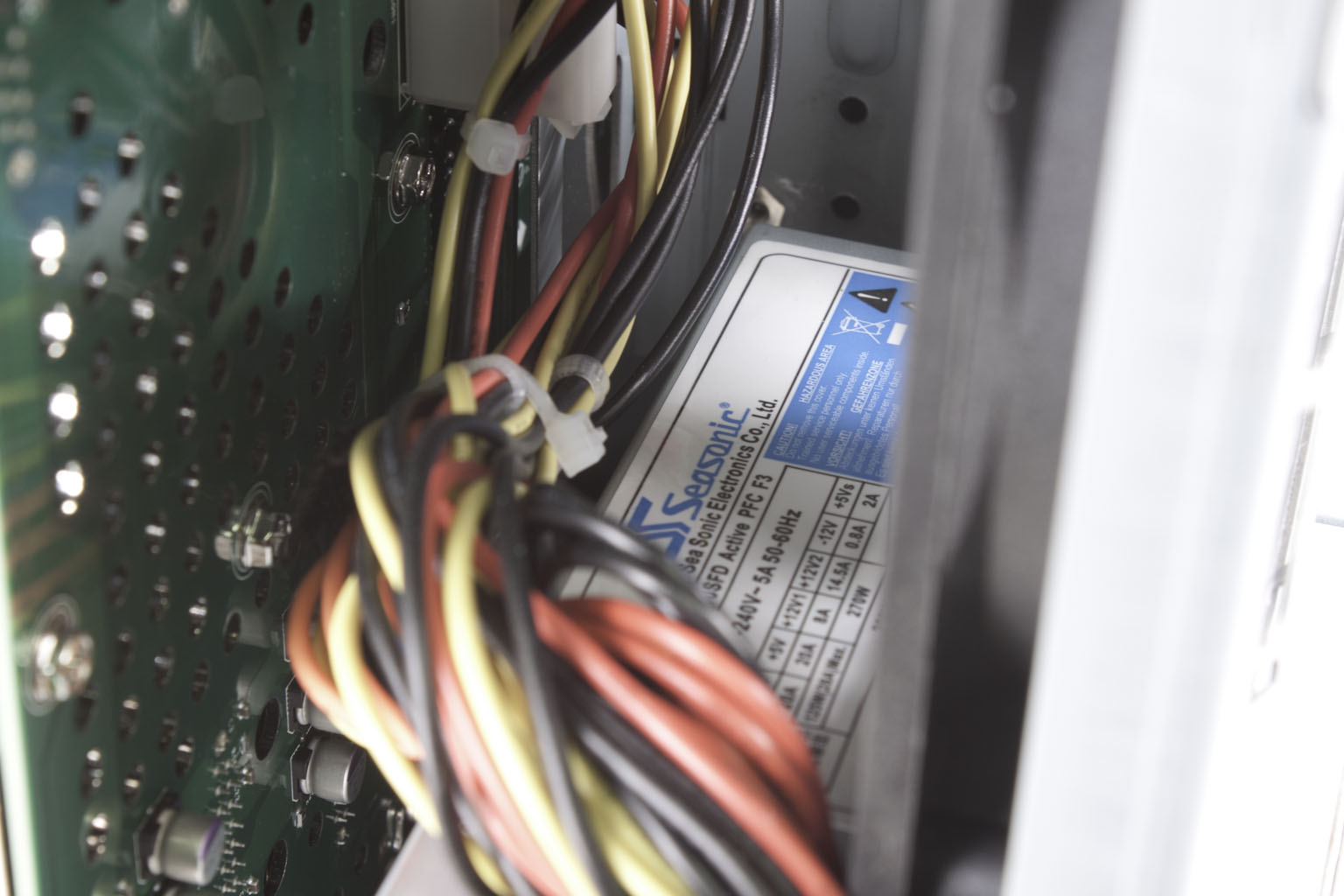
Taking a closer look inside you will find some nice touches in the design of the ReadyNAS Pro 6. Here you can see that the backplane is vented for better air flow. Although we have seen this before it is not all that common and is a nice touch.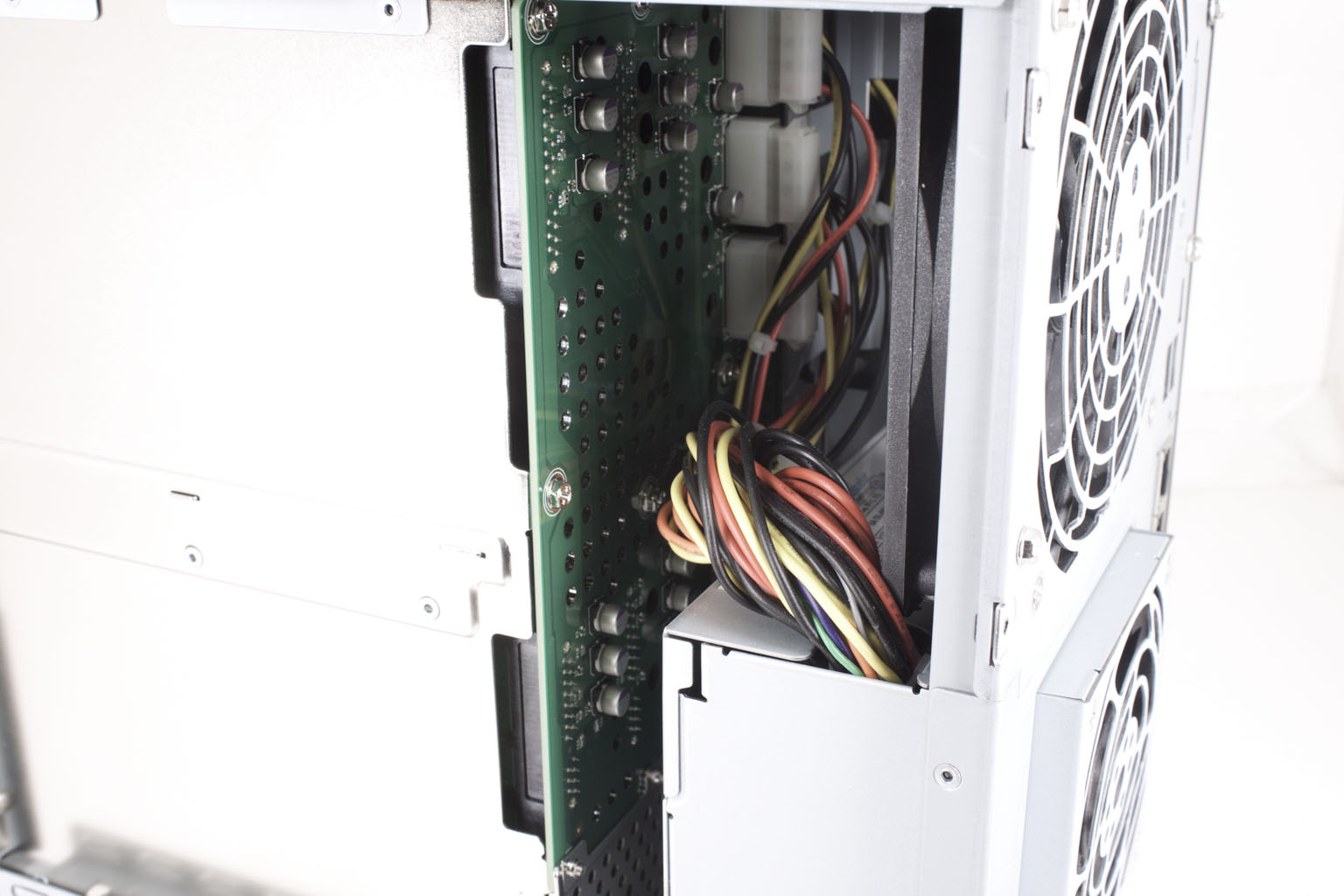
Taking a look at the motherboard you can see what we mean about this being more like a PC than just a NAS. The ReadyNAS Pro uses an LGA 775 motherboard and CPU for its power. This means two full sized DIMM slots and all of the fun stuff that runs it.
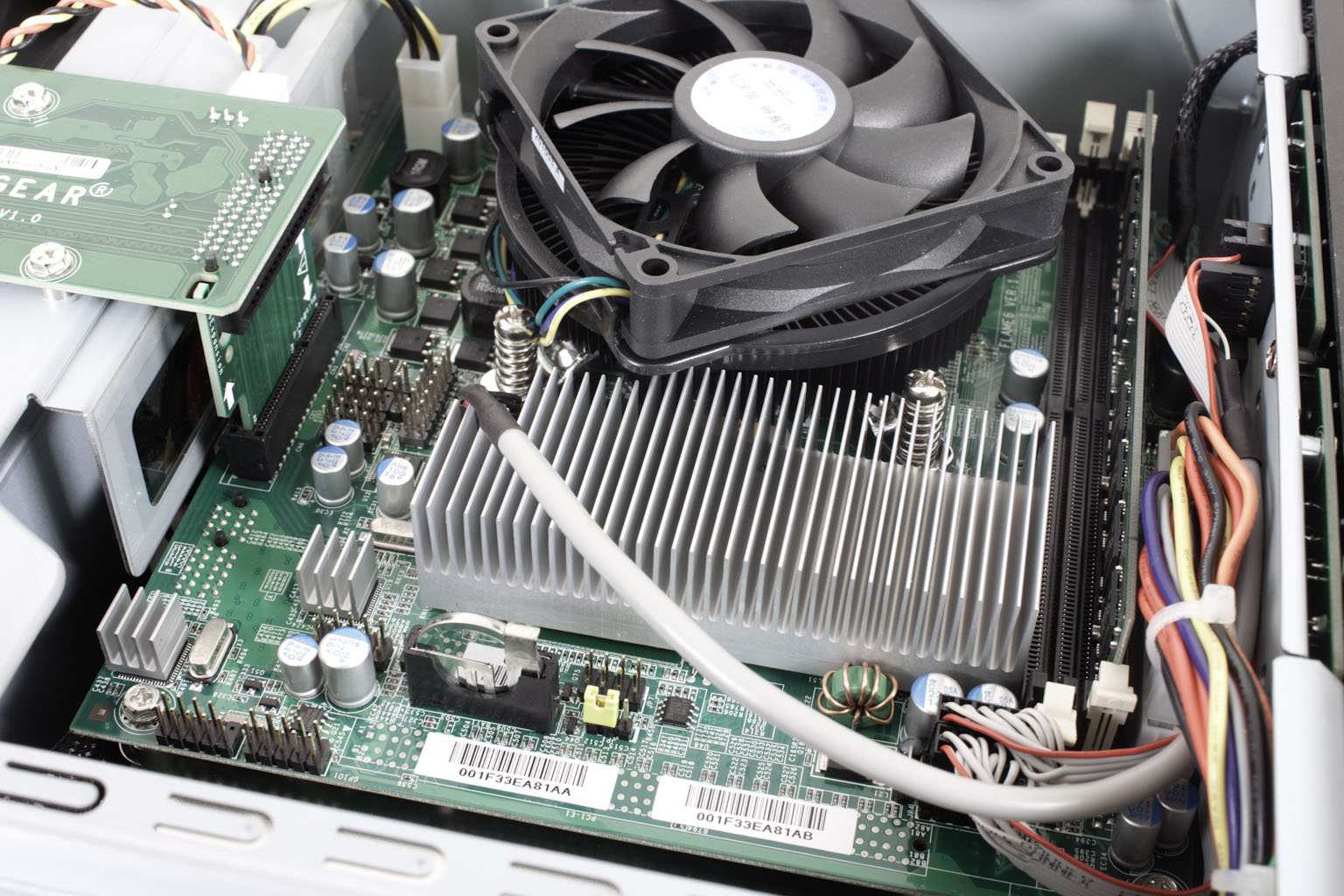 |
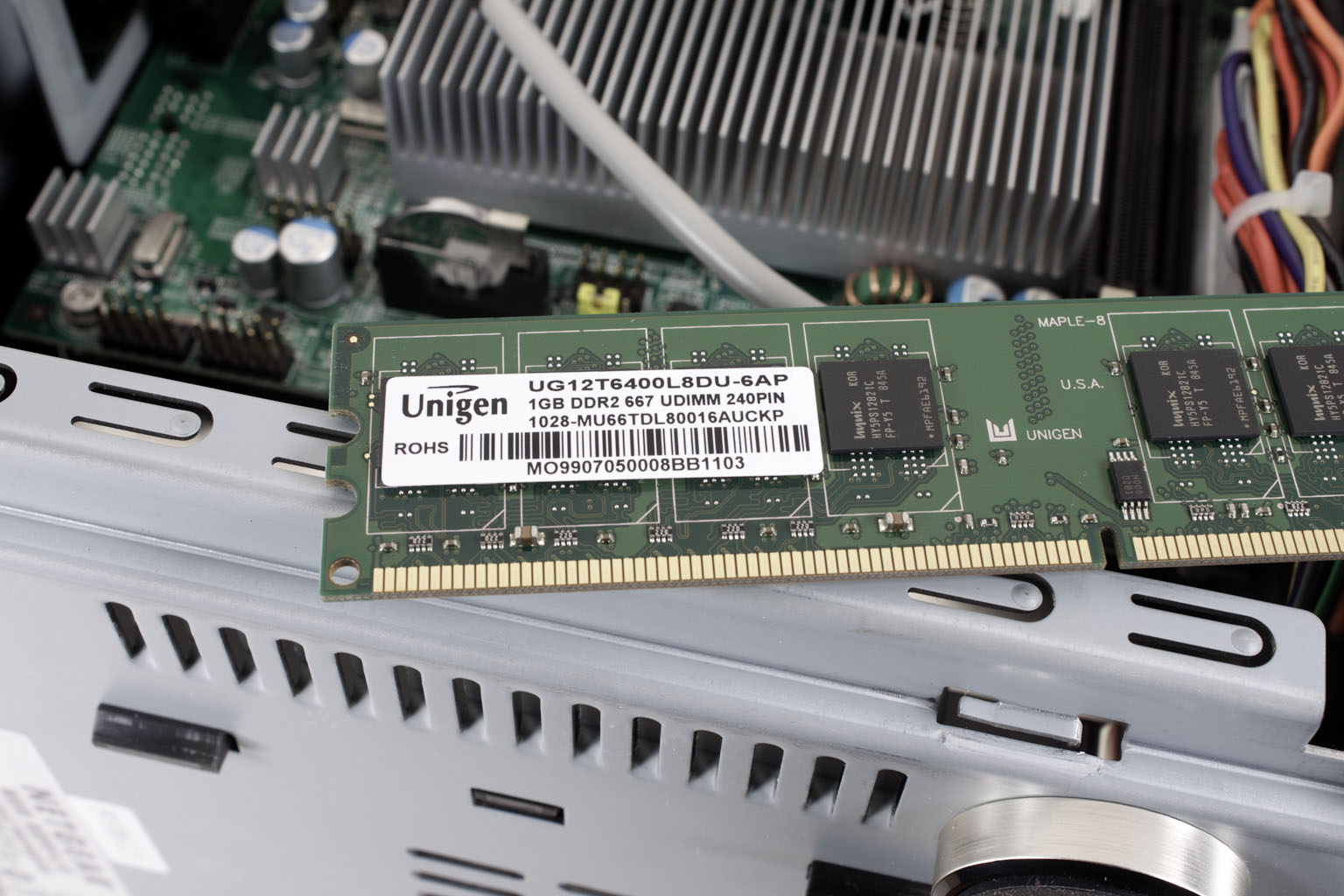 |
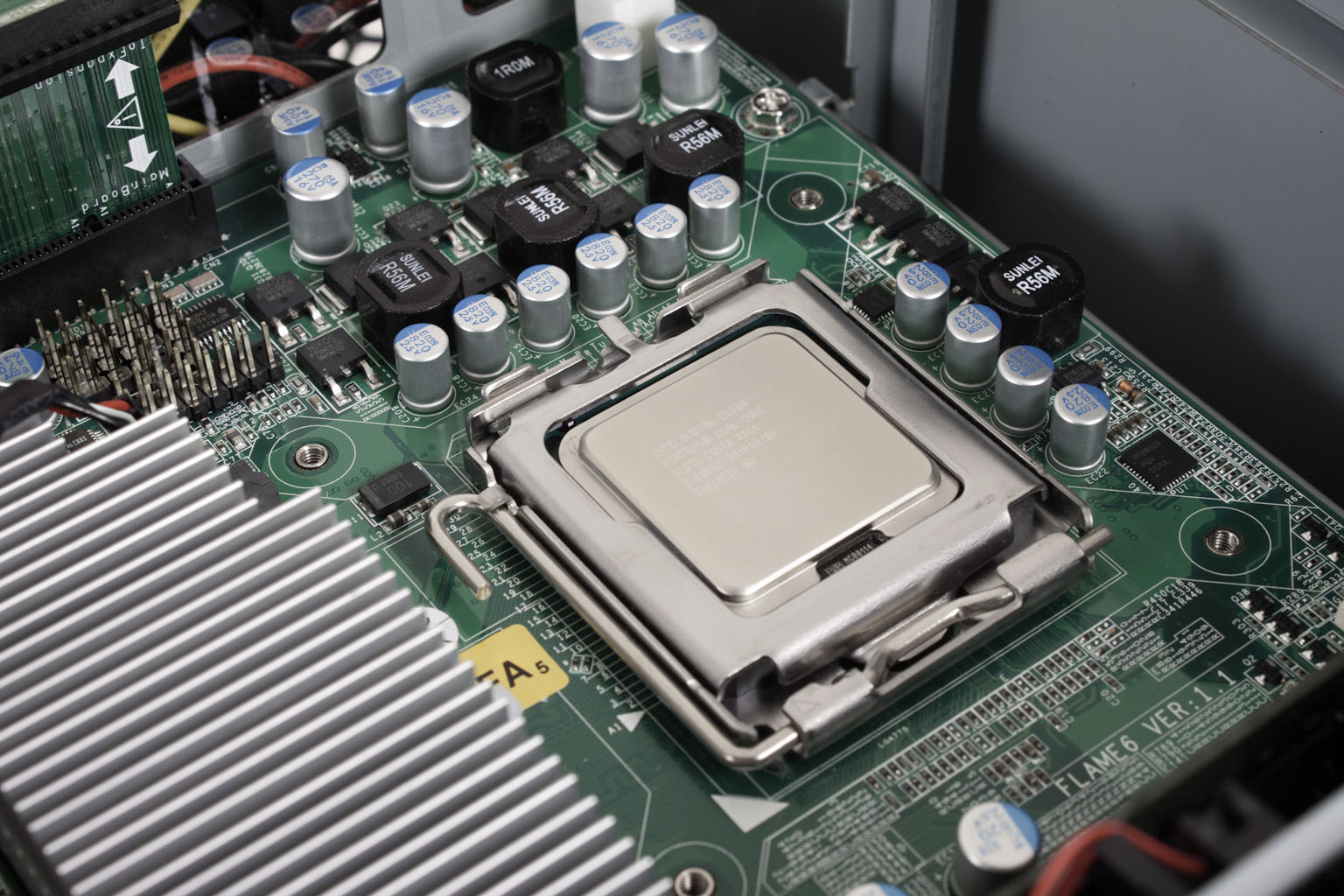 |
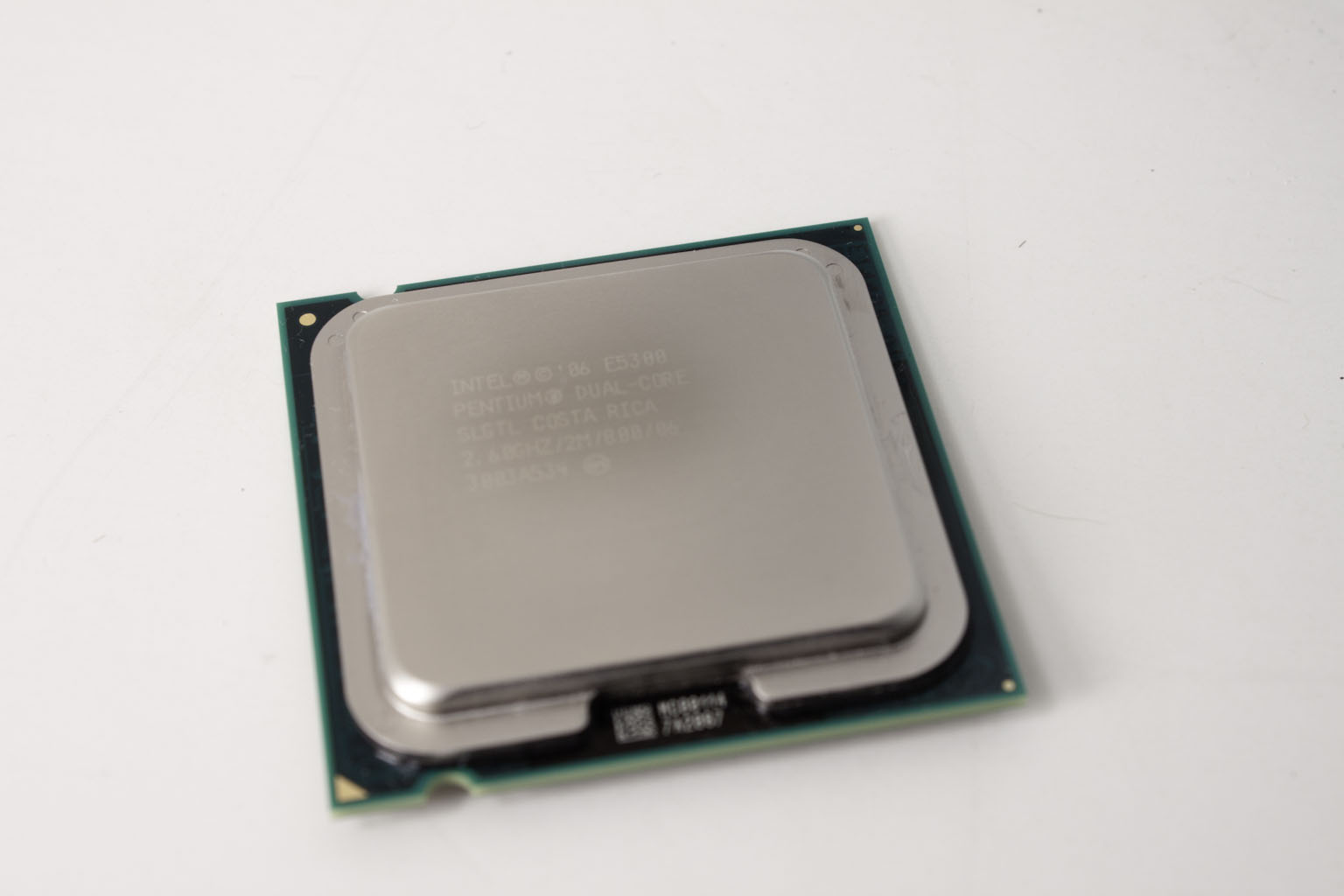
The CPU in this model is an Intel Pentium E5388 Dual Core CPU with a clock speed of 2.6GHz and an FSB of 800 MHz. On the Mini-ITX motherboard there is an Intel 965 memory controller to run the 1GB of DDR2 667 memory. For the six SATA 2 ports NETGEAR went with an Intel ICH8R I/O controller. This is still a good controller although a little dated. Like we said this is much more like a PC than a NAS. We have noticed that many newer NAS devices are lowering the CPU power they use and making do with Intel Atom CPUs (and highly optimized code running it). This gives them access to newer I/O controllers like the ICH10R which is a little more powerful, but you lose on some of the raw CPU power for RAID calculations.
For more details on the ReadNAS Pro 6 you can check out the video below.
Features -
Although we covered the details of the ReadyNAS Pro build we did not go too deep into the features it offers. Some of these features will be very important to anyone interested in this level of product. One of the big ones that caught our eye was the support for VMware through NFS or iSCSI. Both of these protocols allow you to make secure connections to the ReadyNAS Pro from one or more servers. This makes the ReadyNAS Pro a low cost (relatively) option for anyone looking to build a VMware cluster.
NETGEAR has also built in their own Hybrid RAID to allow you to make the most of the RAW storage space you have available. If you use the Hybrid RAID (Called X-RAID) you can get up to 9.2GB of usable storage and still maintain redundancy in the event of a drive failure. This is a very nice feature and one that is gaining traction in the market (we saw this with Synology’s DS1512+).
Weill cover all of the features in more detail in part two of our review of the ReadyNAS Pro 6, but will give you a listing here to keep you interested.
Conclusion –
NETGEAR’s ReadNAS Pro 6 is looking to be a very well build and design product. It is very sturdy and has more than enough power to keep things moving. We might have opted to put a little more memory into the system, but with the cost of memory right now it would not be too big of an investment to drop in another 1GB to improve performance. The feature set and overall product offering also look to provide for a good balance of performance and functionality. We are especially interested in seeing how this device does with some of the optional software modules that are available. In many ways it is these modules and extended features that make the NAS devices such a good value. These will all be items we will dig into in more depth as we get the ReadyNAS Pro 6 Connected and put it through our battery of tests. Look for the performance half of this review very soon.
Discuss this in our Forum



